Table Saw vs Miter Saw: What’s the Difference?
-
- Last updated:
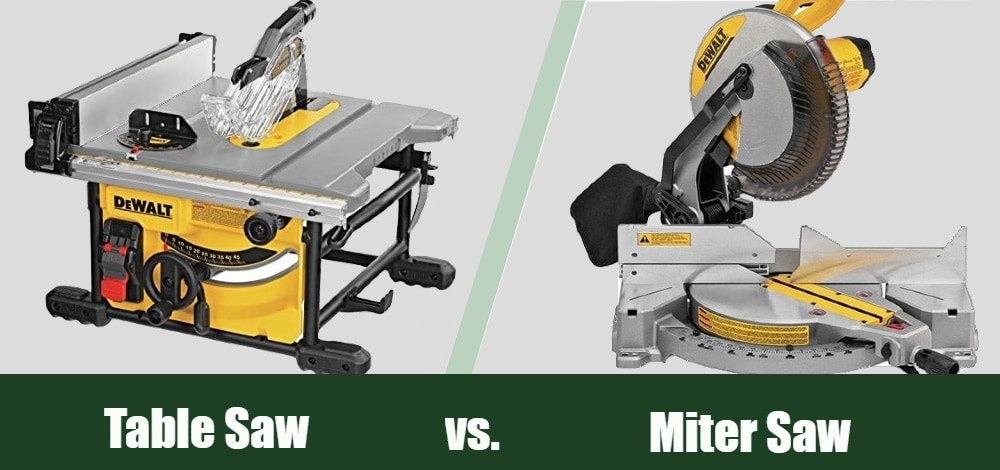

At a glance, table saws and miter saws may seem like the same device. However, appearances are deceiving since these tools are different and should not be used interchangeably. To complete your job quickly and efficiently, it’s important to know the difference between these two saws.
We’ve put together this article that makes understanding the saws’ differences a bit easier. Below, you will find a description of both saw types, their intended usages, and their differences.
Keep reading for more!

Overview of Table Saws
A table saw is a flat table with a saw blade built into the table. This blade will be circular and protrude through the table using a slit. There will be a motor underneath the table that can raise the blade below or above the table’s top surface for cutting purposes.
How it works is that you will place the piece of wood to be cut on the table. Whenever the blade is turned on, you will gently push the piece of wood into the spinning blade to gets cut. You will continue to control and push the piece through the saw until it is cut.
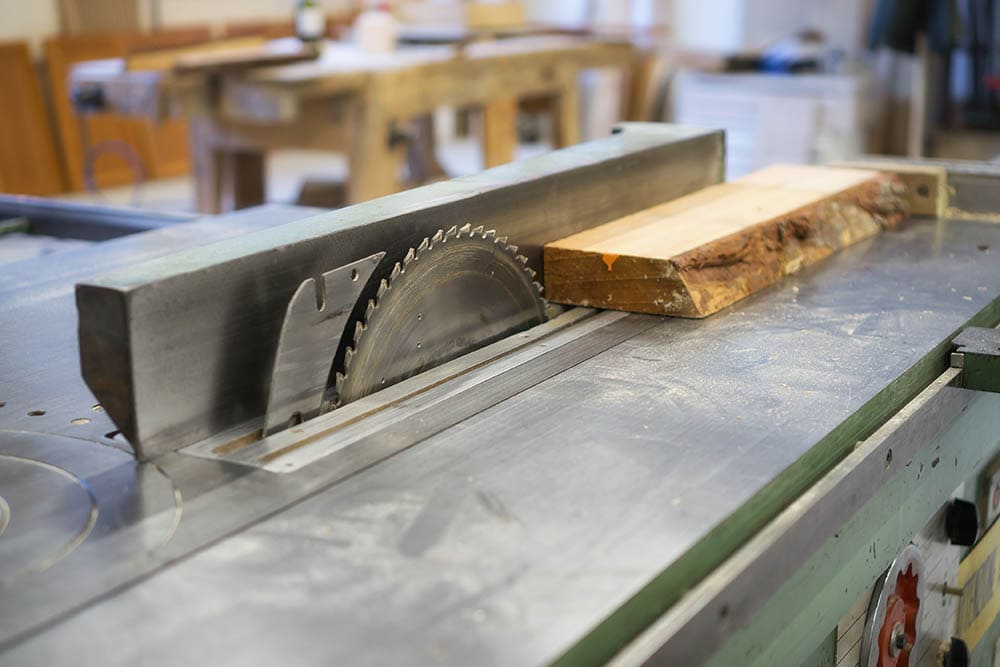
Because of how this saw works, table saws aren’t ideal for precise cuts. Instead, they are better for general cutting, especially through large pieces of wood, but they are great for general crosscutting on smaller pieces of wood, too.
Table saws are a vital part of many workshops, including professional and amateur workshops. They are used for general cutting purposes, especially through large pieces of wood. The table will provide the support needed for the cut, whereas the saw blade efficiently slices through the board.
Table saws can come in both stationary and portable options, but table saws aren’t the most portable. Most table saws are stationary, but some professions utilize portable table saws, such as carpenters, so they can take a table saw with them to job locations.
- Great for large pieces of wood
- Great for general cutting
- Necessary tool for many workstations
- Not very portable
- Difficult for precise cuts
- Related Read: Best Beginner Table Saws – Reviews & Top Picks

Overview of Miter Saws
Whenever you first look at a miter saw, it might look exactly like a table saw. After all, a miter saw has a blade that faces upright and is often placed on top of a table. Although the miter saw looks like the table saw, it is entirely different. In fact, the only way that the miter saw is like the table saw is that the blade is upward and that the tool cuts wood.
Unlike the table saw, a miter saw isn’t built into a table. Instead, it is simply a machine tool you can place on the table. The main feature of the miter saw is its swing arm. You can swing the arm up or down to make your wanted cut.
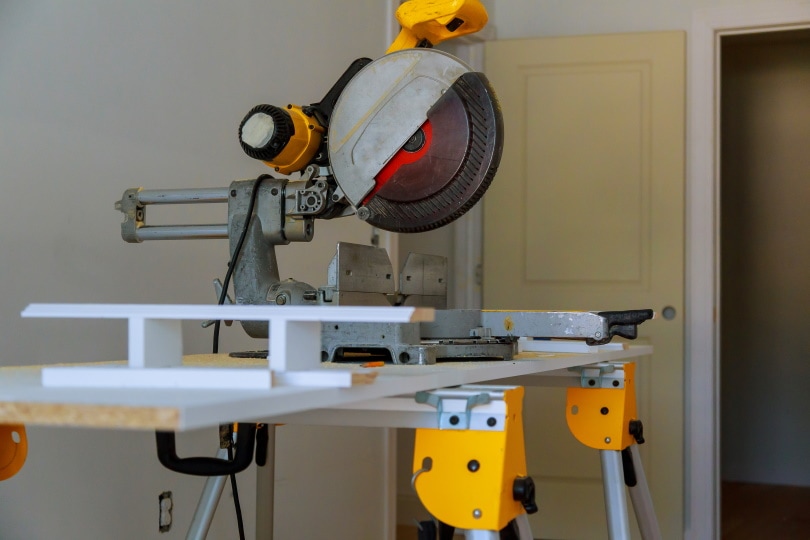
Despite the similarity to a table saw, the purpose of a miter saw is very different. Miter saws are designed to make angular cuts and crosscuts accurately. The swing-mounted blade makes it easy to set precise angles for your cuts.
More so, miter saws are highly portable. Since the miter saw is not directly attached to a table, you can take it with you anywhere. Even though miter saws are less common than table saws, nearly all professional workshops have fantastic miter saws.
- Perfect for precise cuts
- Portable
- Easy to use
- Takes longer for larger general cuts
- Related Read: 10 Best Miter Saws – Reviews & Top Picks

What Are the Differences?
When it comes down to it, you can summarize the differences between table saws and miter saws in three points: cutting angles, portability, and price. Let’s look at each one of these differences in more detail.
Cutting Angles
Without a doubt, the most critical difference between these two saw types is the cutting angles. On the one hand, table saws are designed for general, straight cuts. For example, they are great for cutting lumber; however, in comparison, miter saws are ideal for precise cuts and differing angles.
A table saw will suffice if you just need a saw for general cutting purposes. However, you will need a miter saw if you expect to cut precise angles that rely on accuracy and precision.
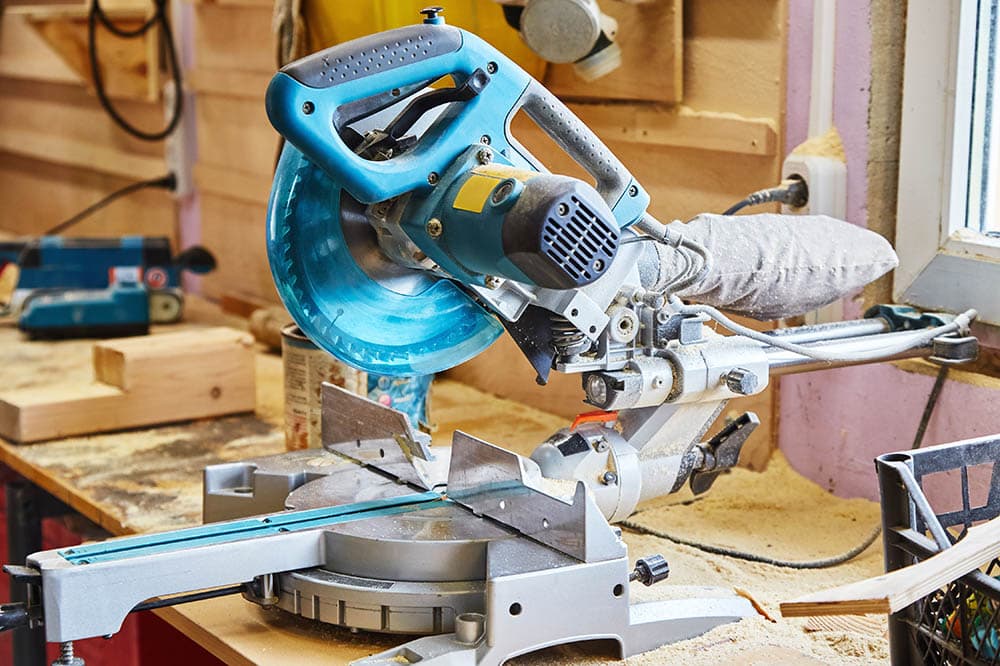
Portability
Another significant difference between table saws and miter saws is their portability. Even though some table saws are not stationary, nearly all table saws are very large and bulky. While it easy to cut large lumber in a straight line with a table saw, it makes it challenging to transport table saws from one location to the next.
On the other hand, miter saws are designed specifically for portability. Because the miter saw is not directly attached to a table, you can put it in the back of your truck and take it to and from your work locations.
Price
Most similar tools cost about the same when it comes to power tools. This is not true for table saws and miter saws. Table saws are notably more expensive than miter saws. Most table saws are at least $1000, whereas you can get a good miter saw for just a couple hundred.

Which Is Right for You?
Now that we’ve learned what these saws are and how they differ from one another, it’s time to talk about which one you should get. You should get a table saw if you plan to make large, straight cuts, but you should get a miter saw if you need to make precise bevel and miter cuts. Here’s a closer look at when you should get each of these saws.
When To Get a Table Saw
Table saws are best for general-purpose cutting, such as when you need to cut planks. Table saws are hands down the best choice for these sorts of cuts because they perform long cuts very accurately and quickly. Table saws can cut through long beams or make straight crosscuts a breeze.
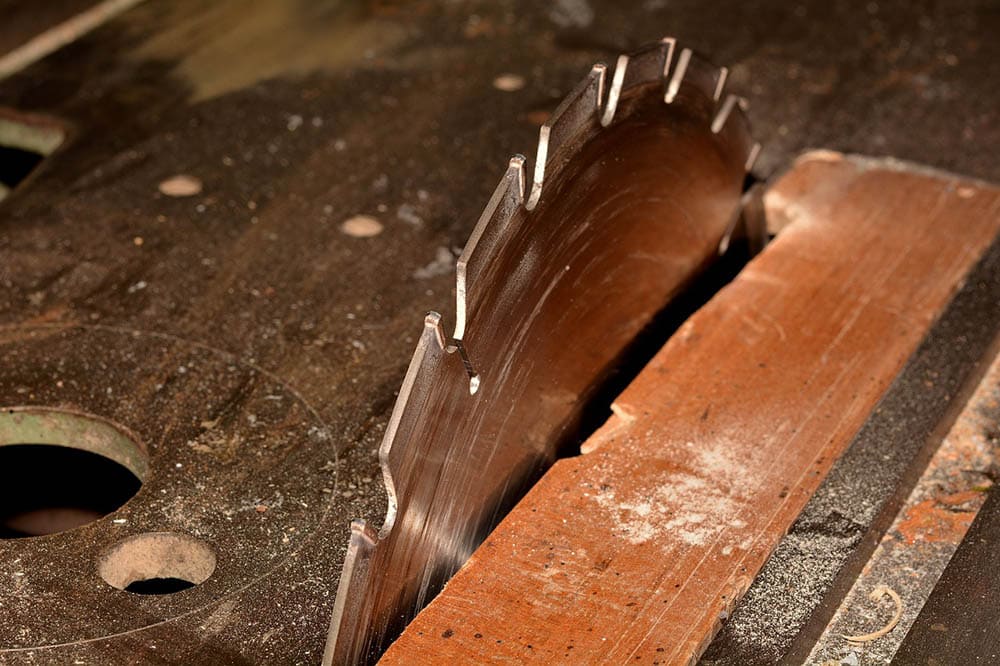
When To Get a Miter Saw
You should get a miter saw if you need to make a lot of miter and bevel cuts. For example, edging and furniture rails require a precise tool that will benefit from the accuracy of a miter saw. Technically, you can get attachments for a table saw to make miter cuts if you only occasionally need a tool of this type, but you should invest in a miter saw outright if you intend to make bevel and miter cuts frequently.

Conclusion
Table saws and miter saws look similar but work very differently. You should get a table saw if you expect to be making general cuts on big pieces of wood, but you should get a miter saw instead if you intend to make bevel and miter cuts.
If you expect to make both cut types frequently, get both saw types. By getting both tools, you will have a saw for nearly every occasion!
Contents

